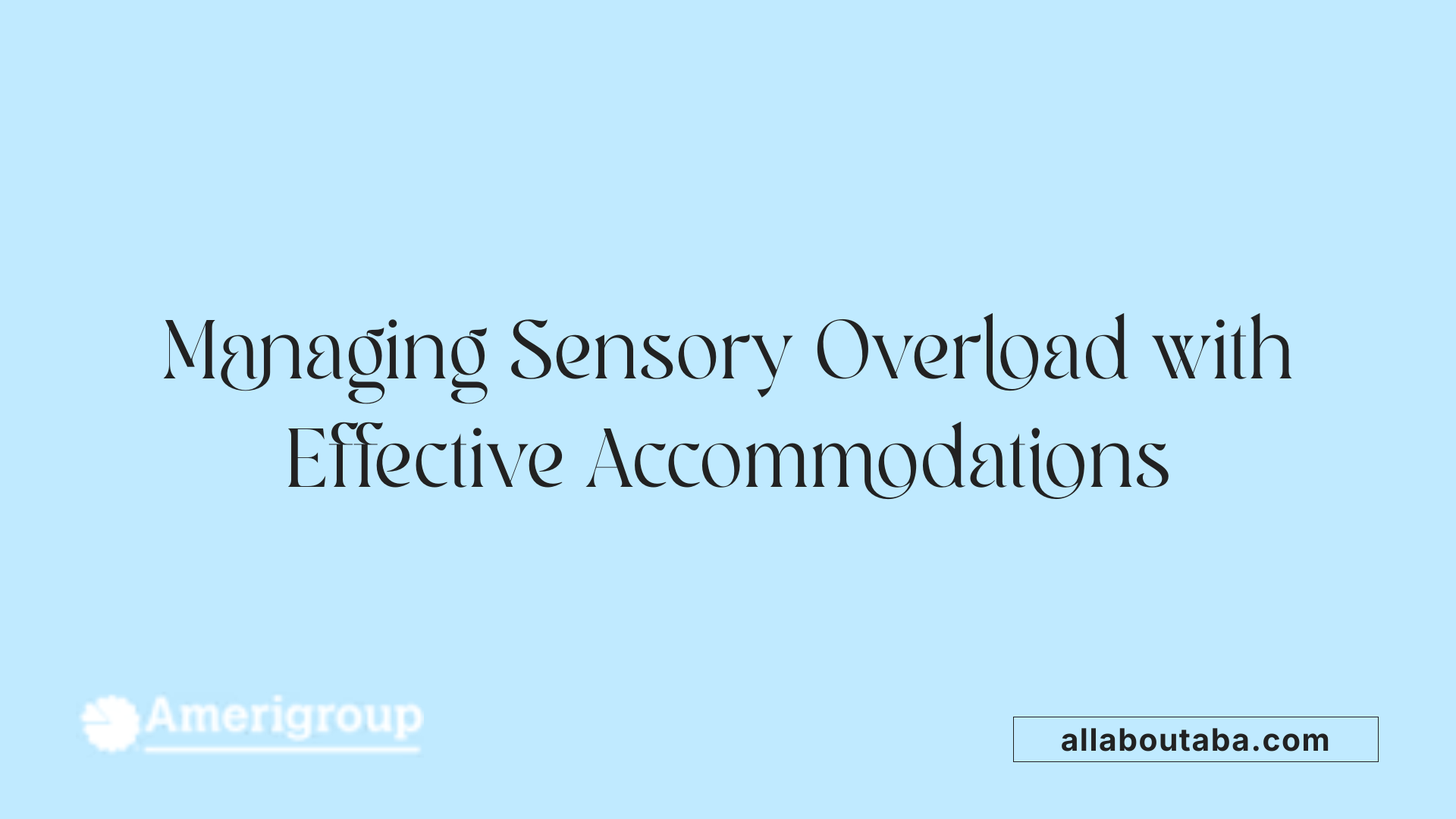How To Support Autistic Students During Exam Season
Understanding the Exam Challenges for Autistic Students
Exam season can be a particularly stressful time for students on the autism spectrum due to sensory sensitivities, anxiety, and unique learning needs. Recognizing the distinct challenges faced by autistic students is essential for educators, families, and support professionals to foster environments that promote confidence, comprehension, and success during exams. This article explores effective strategies and accommodations to support these students through individualized planning, sensory management, and evidence-based behavioral interventions.
Foundations of Autism and Its Impact on Exam Performance
What are key characteristics of autism that affect exam performance?
Autism is a developmental disability primarily impacting communication and social interaction. Students with autism often display repetitive activities, resistance to change, and unique sensory sensitivities. These traits directly influence their exam experiences.
Common challenges faced by autistic students during exams
Autistic students typically encounter several difficulties during exams. Sensory processing issues lead to overload from bright lights or loud sounds common in testing environments, making concentration hard. Motor skill impairments can hinder writing speed and neatness, while executive functioning challenges complicate organizing thoughts, managing time, and following multi-step directions.
Impact of sensory processing difficulties and anxiety
Sensory sensitivities create discomfort or distraction, which can escalate anxiety—already high in testing situations. Anxiety triggers behaviors like body rocking or pacing as coping mechanisms. Without adequate accommodations such as quiet spaces or sensory tools, these combined factors may reduce exam performance and increase stress.
By understanding these autism characteristics and related challenges, educators can better prepare supportive, structured exam environments that alleviate sensory overload and manage anxiety to optimize student success.
Incorporating Applied Behavior Analysis (ABA) Therapy to Support Exam Preparedness

What is Applied Behavior Analysis (ABA) therapy?
Applied Behavior Analysis (ABA) therapy is a scientific, individualized approach aimed at improving positive behaviors and reducing harmful or disruptive ones among individuals with autism. It focuses on analyzing the antecedents, behaviors, and consequences—known as the "A-B-Cs"—to understand what influences behavior. Techniques such as positive reinforcement, prompting, and naturalistic teaching are tailored to each student's unique needs. ABA programs use ongoing data collection to promote skill development, independence, and overall quality of life.
How is ABA therapy structured and delivered?
ABA therapy breaks complex skills into small, manageable steps based on data-driven assessments. Treatment is typically delivered by trained professionals in one-on-one or small group settings, whether in clinics, homes, schools, or community environments. Methods include positive reinforcement to encourage desired behaviors, visual modeling to support learning, prompting strategies, and behavior chaining. Progress is continuously monitored, and interventions are adjusted to best support individual student goals.
Who provides ABA therapy and what qualifications do these professionals have?
ABA services are offered by a team of specialists including Board Certified Behavior Analysts (BCBAs), Registered Behavior Technicians (RBTs), and behavior therapists. BCBAs hold graduate-level qualifications and oversee the design and implementation of treatment plans. RBTs work under BCBA supervision to deliver interventions, while behavior therapists may have additional licenses combined with ABA expertise. These professionals collaborate closely with families and educators to maximize the therapy’s effectiveness.
What are the benefits of ABA therapy for individuals with autism?
ABA therapy supports autistic students by developing communication, social skills, independence, and daily living abilities. Early and intensive ABA intervention often results in meaningful developmental improvements, reducing challenging behaviors while enhancing academic achievement. It equips students to participate more fully in their learning environments and promotes greater self-reliance and social engagement.
Are there any criticisms or controversies associated with ABA therapy?
Some critiques of ABA center on its historical overemphasis on compliance, potentially overlooking emotional well-being and personal autonomy. Early aversive methods have been replaced with naturalistic, play-based techniques that emphasize engagement and enjoyment. Critics also suggest ABA can unintentionally pathologize neurodiversity by focusing on normalization over strengths and acceptance. Current practice emphasizes balancing effective behavioral interventions with respect for each autistic individual's dignity and preferences.
Creating Structured and Predictable Exam Environments
How can structured routines and visual supports help autistic students during exams?
Consistent routines and visual supports such as daily schedules, first–then boards, and visual timers provide autistic students with necessary predictability. This predictability significantly reduces anxiety and helps facilitate smooth transitions during what can be a highly stressful exam period.
Importance of routine and visual supports
For autistic students, the unfamiliarity and unpredictability of exams often lead to heightened stress. Establishing a stable routine throughout the exam period fosters a sense of security. Visual supports act as tangible reminders of what to expect, assist in organizing tasks, and provide clarity around timing.
Establishing revision timetables with visual aids
Breaking exam preparation into manageable parts can be challenging for some autistic students, especially due to executive functioning difficulties. Using revision timetables with clear visual aids like color-coded schedules or calendars helps students structure their study sessions. This approach not only enhances organization but also helps reduce sensory overload by preventing last-minute cramming.
Using social stories to prepare students for exams
Social stories serve as effective tools to familiarize autistic students with the exam process. They outline exam day routines, environment, and behavioral expectations in simple language and pictures. This reduces emotional overwhelm by setting clear expectations and providing coping strategies for challenges like noise or unfamiliar settings.
Visual supports and structured routines combined create a calm, predictable framework, empowering autistic students to navigate exam times with confidence and less anxiety.
Sensory Accommodations to Manage Overload During Exams

Identifying sensory processing challenges
Autistic students often experience heightened sensitivities to visual and auditory stimuli, which can lead to sensory overload. During exams, this overload may cause discomfort and hinder their performance. Understanding these challenges is crucial for providing effective support.
Implementing sensory-friendly environments
Creating a sensory-friendly environment involves minimizing distractions and providing calming settings. Techniques include using soft lighting, soundproofing exam rooms, and reducing clutter. Quiet zones offer spaces where students can retreat if overwhelmed, helping them regulate their sensory input and reduce anxiety.
Use of sensory tools and quiet zones
Sensory tools such as fidget devices and noise-canceling headphones help students manage sensory stimuli during exams. Movement breaks and flexible seating options, including wiggle stools and calming chairs, accommodate students' physical and sensory needs, allowing better focus and comfort.
Together, these accommodations create a structured and predictable testing environment that enhances exam readiness and supports the well-being of autistic students.
Legal and School-Based Supports: IEPs, 504 Plans, and Professional Resources

How do legal supports like IEPs and 504 Plans assist autistic students in exams?
Individualized Education Programs (IEPs) and 504 Plans are fundamental legal tools that help ensure autistic students receive the accommodations they need during exams. These plans offer officially documented supports tailored specifically to each student's unique learning and sensory needs. For students with autism in Texas, IEPs must include eleven designated strategies outlined in the Autism Supplement. This ensures comprehensive attention to areas such as communication challenges, sensory sensitivities, and behavioral support.
These accommodations can vary widely, including extensions of response times, alternative seating arrangements, use of sensory tools, and assistive technology such as speech-generating devices. The consistency provided through legally binding IEPs and 504 Plans is crucial for giving students a fair and comfortable testing environment.
State-level support and resources for educators and families
The Texas Education Agency (TEA) offers extensive support to educators and families of autistic students through professional development and technical assistance. This includes access to autism-specific resources like webinars, toolkits, and courses aimed at implementing evidence-based practices. The Autism Circuit Academy (ACA) provides free training and coaching to help teachers effectively support students on the spectrum.
Additionally, resources such as the Texas Autism Resource Guide for Effective Teaching (TARGET) compile research-backed interventions and strategies for special education staff. The Texas SPED Support website further complements these efforts by providing expert interviews and video tutorials that assist both educators and families in managing the unique challenges faced by autistic learners.
Special education regulations related to autism
Regulations in Texas require that IEPs address multiple areas critical to supporting students with autism. The Autism Supplement included in IEPs mandates consideration of behavioral, sensory, and social communication needs to create a structured, individualized educational plan. This legal framework safeguards the rights of autistic students while guiding schools in delivering appropriate services.
By mandating specific strategies and providing extensive resources at the state level, Texas ensures that students with autism receive tailored education and exam accommodations. These supports play a significant role in promoting equity and success for autistic students throughout their academic journey.
Supporting Social and Emotional Needs During Exam Season

Addressing Anxiety and Stress
Anxiety and stress frequently affect autistic students during exam periods, often leading to behaviors such as body rocking, pacing, or flapping. These behaviors are coping mechanisms triggered by sensory overload or uncertainty. To help students manage these feelings, educators can maintain consistent routines and include reassuring strategies like familiar activities and positive self-talk on exam day. Such structured support helps reduce the intensity of anxiety, allowing students to focus better.
Behavior Intervention Plans and Calming Spaces
Behavior Intervention Plans (BIPs), developed from functional behavior assessments, play a crucial role in promoting emotional regulation. These plans offer proactive strategies tailored to individual needs to prevent challenging behaviors. Providing access to calming spaces where students can retreat and self-regulate is equally important. These environments help mitigate sensory overload and create a sense of safety, enabling students to return to exam tasks with improved focus and calmness.
Role of Family and Peer Support
Collaboration with family members ensures consistent emotional support and reinforcement of strategies used at school. Parents can help prepare students for exams by maintaining routines and offering encouragement. Peer buddy systems also foster social connection, reducing feelings of isolation during stressful times. Additionally, explicitly teaching social skills enables autistic students to engage more confidently with peers, bolstering their overall well-being and exam readiness.
Assistive Technology and Instructional Modifications for Exam Success

What Technological and Instructional Supports Benefit Autistic Students During Exams?
Assistive technology plays a vital role in helping autistic students navigate the challenges of exams. Tools like speech-generating apps and text-to-speech software enhance communication, allowing students to express themselves when verbal skills might be limited under stress. Visual schedule apps support organization by breaking down exam steps, timing, and providing reminders, which is crucial for managing anxiety and maintaining focus.
Instructional modifications tailored to student strengths also support exam success. Utilizing clear, straightforward language and incorporating visual aids help clarify instructions, making content more accessible. When educators align learning materials with student interests, engagement improves, boosting motivation and comprehension.
To address executive functioning difficulties common among autistic students, specific tools can be integrated during test preparation and exam-taking. Visual checklists guide students through multi-step processes, timers help with time management, and color-coded folders organize materials for quick access. These aids assist students in breaking down complex tasks and maintaining concentration, ultimately reducing exam stress.
Together, these technological supports and instructional strategies provide a structured, personalized framework that enhances autistic students' ability to perform at their best during exams, building confidence and autonomy in academic settings.
Collaborative Approaches: Engaging Families and Educators for Holistic Support
How does collaboration enhance exam support for autistic students?
Effective support for autistic students during exams is strengthened through close collaboration among families, educators, therapists, and other support staff. This teamwork ensures that accommodations are consistent and that strategies used at home are reinforced at school, creating a seamless support system.
Importance of collaboration between families, educators, and therapists
Engaging families alongside educators and therapists helps create a comprehensive understanding of each student's unique needs. Families offer valuable insights about their child's strengths, sensitivities, and anxiety triggers, which can guide intervention planning. Frequent communication among team members fosters trust and responsiveness to evolving needs during exam preparation.
Professional development and training opportunities
The Texas Education Agency (TEA) offers a variety of professional development workshops and resources like the Autism Circuit Academy (ACA). These programs deliver coaching and evidence-based strategies tailored to autism education. Educators trained in these areas are better equipped to implement modifications, sensory supports, and social skill programs that can directly impact exam success.
Customizing interventions for individual needs
Autistic students have varied profiles; some may excel in visual-spatial tasks while facing challenges with executive functioning. Collaboration ensures that interventions are personalized, using tools such as visual schedules, sensory accommodations, and assistive technologies that match each student's learning style and comfort.
By leveraging shared knowledge, training, and tailored strategies, collaborative teams promote greater exam readiness and reduce anxiety for autistic students, empowering them to perform at their best.
Bridging Support for Autistic Students to Thrive in Exams
Supporting autistic students during exam season involves a multifaceted approach that addresses sensory sensitivities, anxiety, executive functioning, and individualized learning profiles. Integrating science-backed therapies like Applied Behavior Analysis, structured routines, sensory accommodations, and assistive technology creates an inclusive environment where students can perform to their potential. Legal frameworks such as IEPs and 504 Plans ensure tailored accommodations are consistently provided, while collaboration among educators, families, and professionals fosters holistic support. By embracing these strategies, educational communities empower autistic students to navigate exam challenges with confidence, resilience, and success.
References
- Autism | Texas Education Agency
- Autism and Exams: Useful Study Tips
- Academic Supports for College Students with an Autism ...
- Autism Classroom Accommodations Practices
- The Controversy Around ABA
- Debunking 7 Common Myths About ABA Therapy - GSEP Blog
- Applied Behavior Analysis (ABA)
- Types Of ABA Therapy Jobs And Their Degree Requirements
- Who Qualifies for ABA Therapy: Eligibility Guide
- What Do ABA Therapists Do?
Other articles
Recent articles

How To Support Autistic Students During Exam Season

Autism And Goal Setting For Personal Growth

How To Use Gamification In Autism Learning Programs

How Schools Can Reduce Bullying Of Autistic Students

Early Intervention Strategies For Autism Spectrum Disorder

The Role Of Therapists In Autism Life Skills Coaching

How To Support Autistic Individuals In Crisis Situations

Autism And Self-Care Routines For Stress Management

Understanding Echolalia And Its Role In Autism Communication

Autism And Fine Arts Education Benefits

The Impact Of Multisensory Learning On Autism Education

How Family Counseling Supports Autism Household Dynamics

Best Practices For Inclusive Playgrounds For Autism

Best Practices For Autism-Friendly Shopping Centers

How Autism Affects Fine Motor Skill Development

Best Ways To Introduce Sensory Activities Into Daily Routines

How Sports Teams Can Be Inclusive Of Autistic Players

Autism And Strategies For Building Workplace Resilience

Autism And The Impact Of Hormonal Changes During Puberty

How To Support Autistic Students In Foreign Language Classes

Best Ways To Teach Money Skills To Teens With Autism

Supporting Siblings Of Children With Autism

Autism And Co-Occurring Gastrointestinal Disorders

The Role Of Art Projects In Autism Sensory Integration

How Schools Can Incorporate Sensory Break Spaces

Best Practices For Autism Sensory Regulation At School

Autism And Strategies For Teaching Organizational Skills

Understanding The Relationship Between Autism And Anxiety Disorders

Autism And Life Planning For Long-Term Care

Exploring Visual Supports In Autism Education

Ways To Encourage Social Interaction In Children With Autism

The Connection Between Autism And Dyscalculia

The Role Of Occupational Therapy In Transition Planning For Autism

The Role Of Physical Therapists In Autism Motor Skills Support

How To Teach Decision-Making Skills To Autistic Young Adults

The Connection Between Autism And Epilepsy

Best Practices For Transitioning Autistic Children Into New Schools

Autism And Time Management Challenges In Adulthood

The Role Of Visual Arts In Autism Communication Development

How To Address Tactile Defensiveness In Autism

Best Practices For Telehealth Autism Therapy

How To Help Autistic Children Develop Friendship Skills

How Schools Can Support Autistic Students In Career Prep

Best Strategies For Autism-Friendly Event Planning

Understanding Noncontingent Reinforcement In Autism Behavior Plans

How Drama Therapy Benefits Autistic Individuals

Best Practices For Autism-Friendly Fitness And Recreation Centers

Best Ways To Promote Healthy Social Media Use For Autistic Teens

How To Help Autistic Children Cope With Public Speaking

Autism And Strategies For Managing Unexpected Changes

Best Podcasts About Autism For Parents And Educators

Autism And The Impact Of Seasonal Changes On Behavior

The Role Of Diet In Managing Co-Occurring Conditions With Autism

Sleep Challenges In Autism And Practical Solutions

Best Ways To Build Daily Routines For Autistic Children

Best Practices For Supporting Autistic Entrepreneurs

Autism And Strategies For Navigating Large Social Gatherings

Adaptive Sports And Recreational Activities For People With Autism

Autism And The Benefits Of Story-Based Learning Activities

Understanding The Role Of Play In Autism Development

Autism And The Impact Of Environmental Noise On Learning

How To Create Autism-Friendly Community Spaces

Autism And Chronic Health Conditions: What To Know

The Role Of Care Managers In Autism Life Planning

How To Teach Social Boundaries To Autistic Children

How Autistic Individuals Experience Empathy Differently

How To Support Autistic Employees In Remote Work Settings

Autism And The Relationship Between Motor Skills And Learning

How To Create Community Resource Guides For Autism Families

How To Teach Daily Living Skills To Autistic Teens

Autism And The Impact Of Mind-Body Practices On Stress Reduction

Autism And The Benefits Of Outdoor Group Activities

How To Create Autism-Friendly Sensory Paths In Schools

Best Practices For Autism-Friendly Park And Recreation Areas

Autism And Strategies For Reducing School Refusal

Supporting Autistic Individuals In Public Speaking

The Role Of Diet In Managing Autism Symptoms

The Benefits Of Gardening Clubs For Autism Social Development

How To Prepare Autistic Children For Dental Visits

Autism And Employment: Career Paths That Work

Best Practices For Autism-Friendly Hotels And Lodging

The Impact Of Screen Time On Autism Development

Autism Screening Tools For Early Childhood

The Role Of Physical Exercise In Autism Therapy

Best Strategies For Supporting Autistic College Students

The Role Of Technology In Autism Early Detection

Sensory-Friendly Classroom Design Ideas For Autistic Students

The Role Of Speech Therapy In Building Social Communication Skills

Best Strategies For Handling Autistic Burnout In Adults

Autism And The Importance Of Predictability In Routine

Autism And Peer Education: Teaching Acceptance In Schools

Best Practices For Sensory-Friendly Libraries And Reading Rooms

Self-Advocacy Skills For Autistic Adults

The Role Of Technology In Autism Peer Communication

Promoting Physical Activity In Children With Autism

How To Prepare Autistic Children For Medical Procedures

The Role Of Social Media In Autism Advocacy And Awareness

The Impact Of Sensory Rooms In Public Facilities For Autism

How To Create An Autism-Friendly Holiday Celebration

Best Practices For Inclusive Education For Autistic Students
We’re All About You, Your Family, and Your Child

